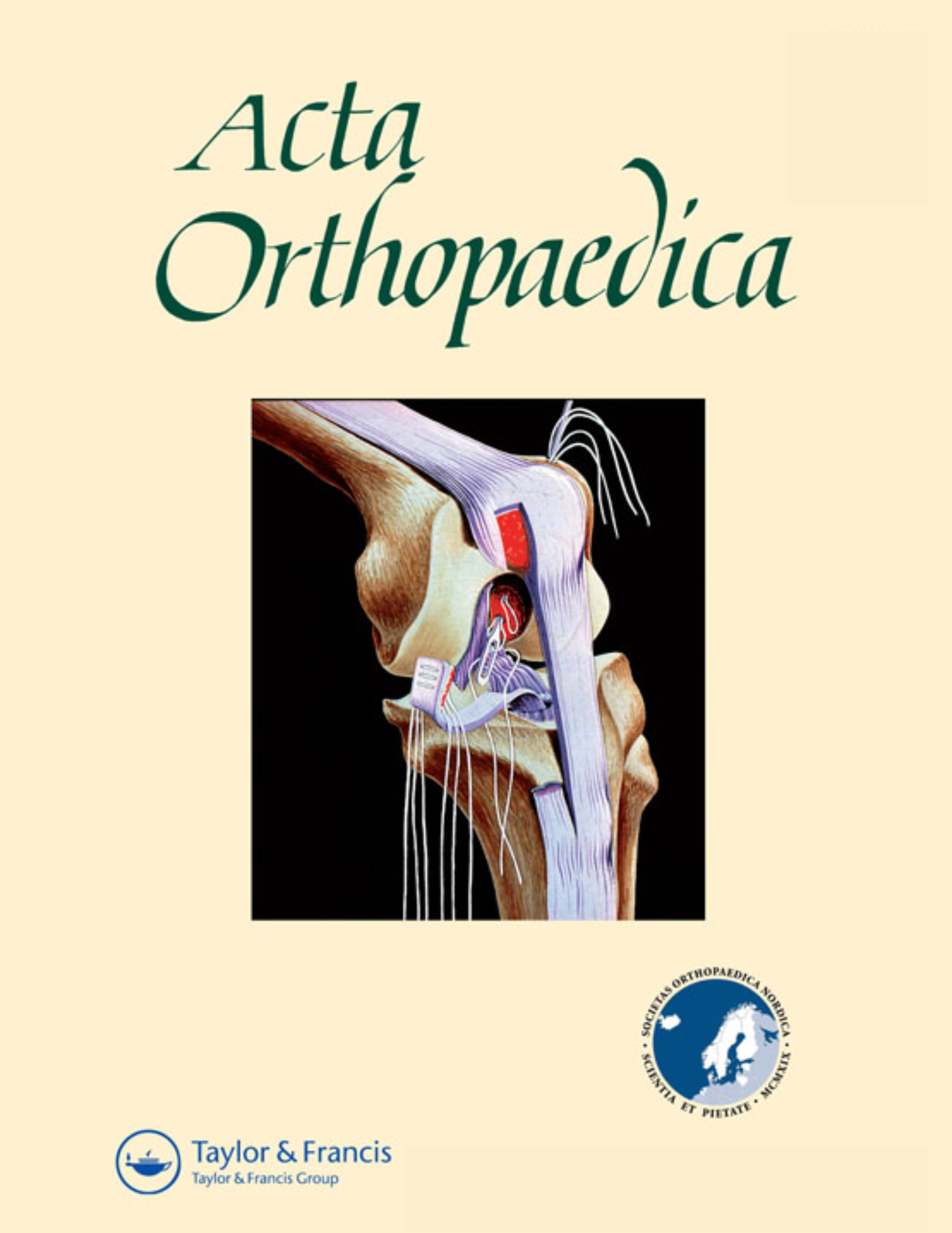
Similar treatment time and pain in tension-band plating vs stapling for hemiepiphysiodesis

Similar treatment time and pain in tension-band plating vs stapling for hemiepiphysiodesis
Hemiepiphysiodesis: Similar treatment time for tension-band plating and for stapling
Acta Orthop. 2013 Apr;84(2):202-6. doi: 10.3109/17453674.2013.782526. Epub 2013 Mar 14Synopsis
The present trial evaluated 20 children with idiopathic genu valgum (IGV) who were randomized for hemiepiphysiodesis with either a tension band construct or staples to correct angular deformities. To compare the efficiency of both treatment methods, the time for correction of deformity, changes in angles as measured on radiographs, pain by visual analog scale (VAS) and analgesic consumption were recorded. The post-operative results indicated no differences between using staples and tension band plating for all outcomes.
Was the allocation sequence adequately generated?
Was allocation adequately concealed?
Blinding Treatment Providers: Was knowledge of the allocated interventions adequately prevented?
Blinding Outcome Assessors: Was knowledge of the allocated interventions adequately prevented?
Blinding Patients: Was knowledge of the allocated interventions adequately prevented?
Was loss to follow-up (missing outcome data) infrequent?
Are reports of the study free of suggestion of selective outcome reporting?
Were outcomes objective, patient-important and assessed in a manner to limit bias (ie. duplicate assessors, Independent assessors)?
Was the sample size sufficiently large to assure a balance of prognosis and sufficiently large number of outcome events?
Was investigator expertise/experience with both treatment and control techniques likely the same (ie.were criteria for surgeon participation/expertise provided)?
Yes = 1
Uncertain = 0.5
Not Relevant = 0
No = 0
The Reporting Criteria Assessment evaluates the transparency with which authors report the methodological and trial characteristics of the trial within the publication. The assessment is divided into five categories which are presented below.
4/4
Randomization
3/4
Outcome Measurements
3/4
Inclusion / Exclusion
4/4
Therapy Description
4/4
Statistics
Detsky AS, Naylor CD, O'Rourke K, McGeer AJ, L'Abbé KA. J Clin Epidemiol. 1992;45:255-65
The Fragility Index is a tool that aids in the interpretation of significant findings, providing a measure of strength for a result. The Fragility Index represents the number of consecutive events that need to be added to a dichotomous outcome to make the finding no longer significant. A small number represents a weaker finding and a large number represents a stronger finding.
Why was this study needed now?
Hemiepiphysiodesis is used to correct excessive angular deformities in the extremities of children. Implants stop unilateral growth until the deformity is corrected and are then removed to resume growth. Staples have been used for this procedure, but are associated with complications such as staple migration, breakage, and premature growth plate closure. More recently, tension-band plating has been introduced for faster correction and prevention of growth plate compression. However, no known randomized trial has demonstrated superiority of tension-band plating technique over stapling.
What was the principal research question?
How do the clinical and radiographic effects of stapling compare to tension-band plating in children with IGV of the distal femur?
What were the important findings?
- The tension band group and staples group had similar time taken to correct idiopathic genu valgum deformity (mean 340 days (286–394) vs. mean 349 days (263–435), respectively) (p=0.8). Cohen’s delta showed an estimated effect size of 0.075.
- No implant failures, infection or growth arrests occurred, while all 20 children achieved correction of genu valgum deformity.
- Although groups differed in gender (M/F in staples group = 3/7 vs tension band = 8/2) and age (tension band group mean age = 10.1 ( 8–14 years) vs. staples group mean age = 11.1 (6–13) years), there were no differences in treatment time, preoperative intermalleolar distance, and measured radiographic values (LDFA, MPTA, and MAD) treatment (p>0.05).
- VAS pain was recorded for 18/20 children and was similar in both groups (p>0.05) 72 hours postoperatively.
- 1 child in tension-band group had a rebound of intermalliolar distance of 8 cm and was scheduled for surgery
What should I remember most?
Hemiepiphysiodesis with both tension band and staples have similar treatment time and angle correction of idiopathic genu valgum.
How will this affect the care of my patients?
The trial was not able to show superiority of either hemiepiphysiodesis methods. Further studies with larger populations need to be conducted as this study may be underpowered.
Learn about our AI Driven
High Impact Search Feature
Our AI driven High Impact metric calculates the impact an article will have by considering both the publishing journal and the content of the article itself. Built using the latest advances in natural language processing, OE High Impact predicts an article’s future number of citations better than impact factor alone.
Continue



 LOGIN
LOGIN

Join the Conversation
Please Login or Join to leave comments.